[World] Ukraine weapons: What tanks and other equipment are the world giving?
Image source, Getty ImagesBy David Brown, Jake Horton & Tural AhmedzadeBBC NewsNato members are considering sending more weapons and ammunition to Ukraine to help it defend itself against Russia's invasion. The US is the largest contributor of military aid by far - followed by the European Union (EU), Germany and the UK.The amount of military aid given to Ukraine is tracked by the Keil Institute, but the data only accounts for donations up until the end of May. Since then, the US announced a new military aid package for Ukraine worth up to $500 million.The US has also confirmed it will provide cluster munitions, a controversial move which has caused unease among some Nato allies.Ukraine will also receive missiles from France - similar to the UK Storm Shadows missiles that were recently delivered. TanksDozens of tanks have already been committed. Ukraine says they are urgently needed to defend its territory and to push out Russian troops. The US is sending 31 of its Abrams tanksThe UK
![[World] Ukraine weapons: What tanks and other equipment are the world giving?](https://www.9020blog.com/uploads/images/202307/image_750x_64ae19c544c02.jpg)

Nato members are considering sending more weapons and ammunition to Ukraine to help it defend itself against Russia's invasion.
The US is the largest contributor of military aid by far - followed by the European Union (EU), Germany and the UK.
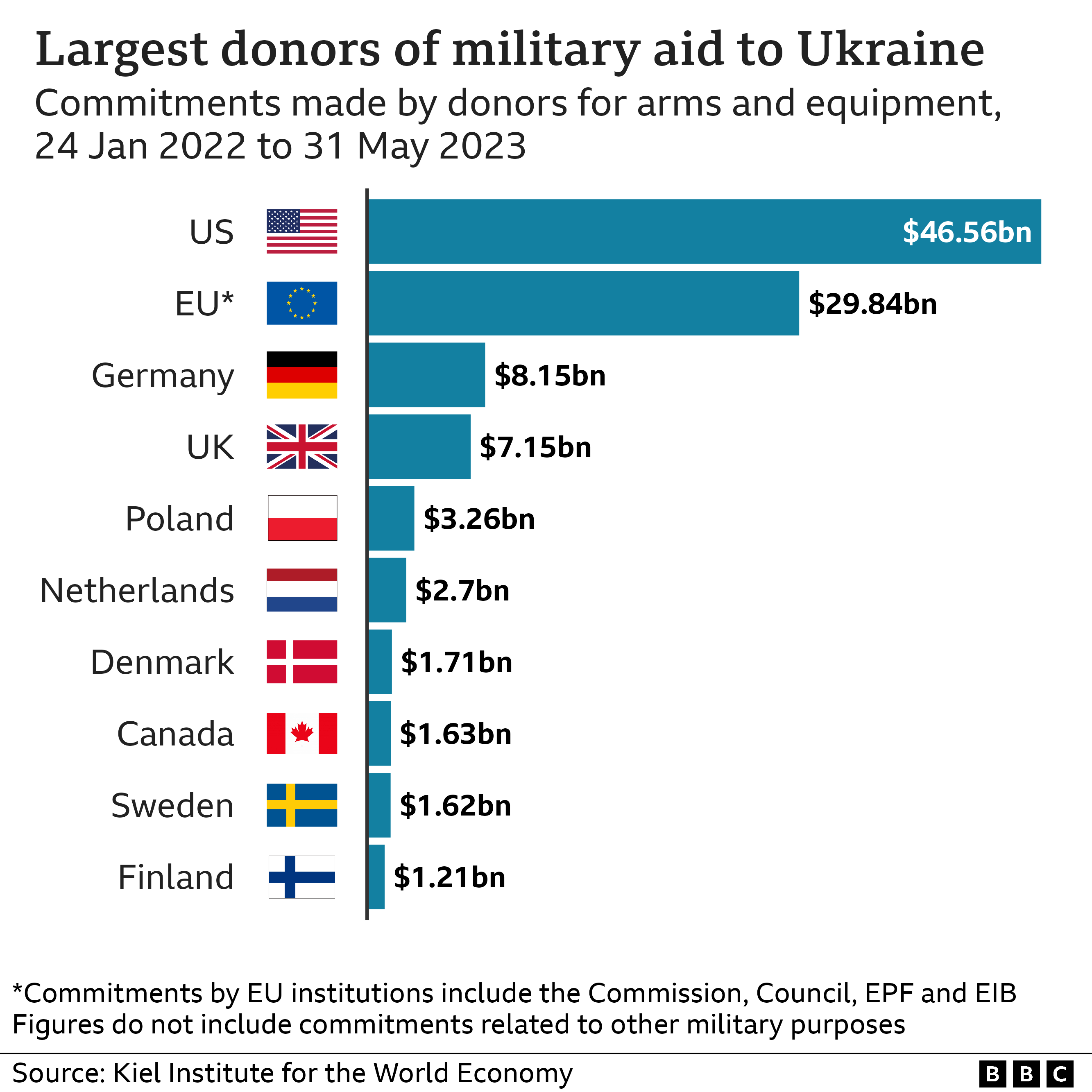
The amount of military aid given to Ukraine is tracked by the Keil Institute, but the data only accounts for donations up until the end of May. Since then, the US announced a new military aid package for Ukraine worth up to $500 million.
The US has also confirmed it will provide cluster munitions, a controversial move which has caused unease among some Nato allies.
Ukraine will also receive missiles from France - similar to the UK Storm Shadows missiles that were recently delivered.
Tanks
Dozens of tanks have already been committed. Ukraine says they are urgently needed to defend its territory and to push out Russian troops.
- The US is sending 31 of its Abrams tanks
- The UK is providing 14 Challenger 2 tanks
- Germany is providing 14 Leopard 2 tanks
- Spain says it's sending six of its Leopard 2 tanks
The Leopard 2 is used by a number of European countries, and is considered to be easier to maintain and more fuel-efficient than most other Western tanks.
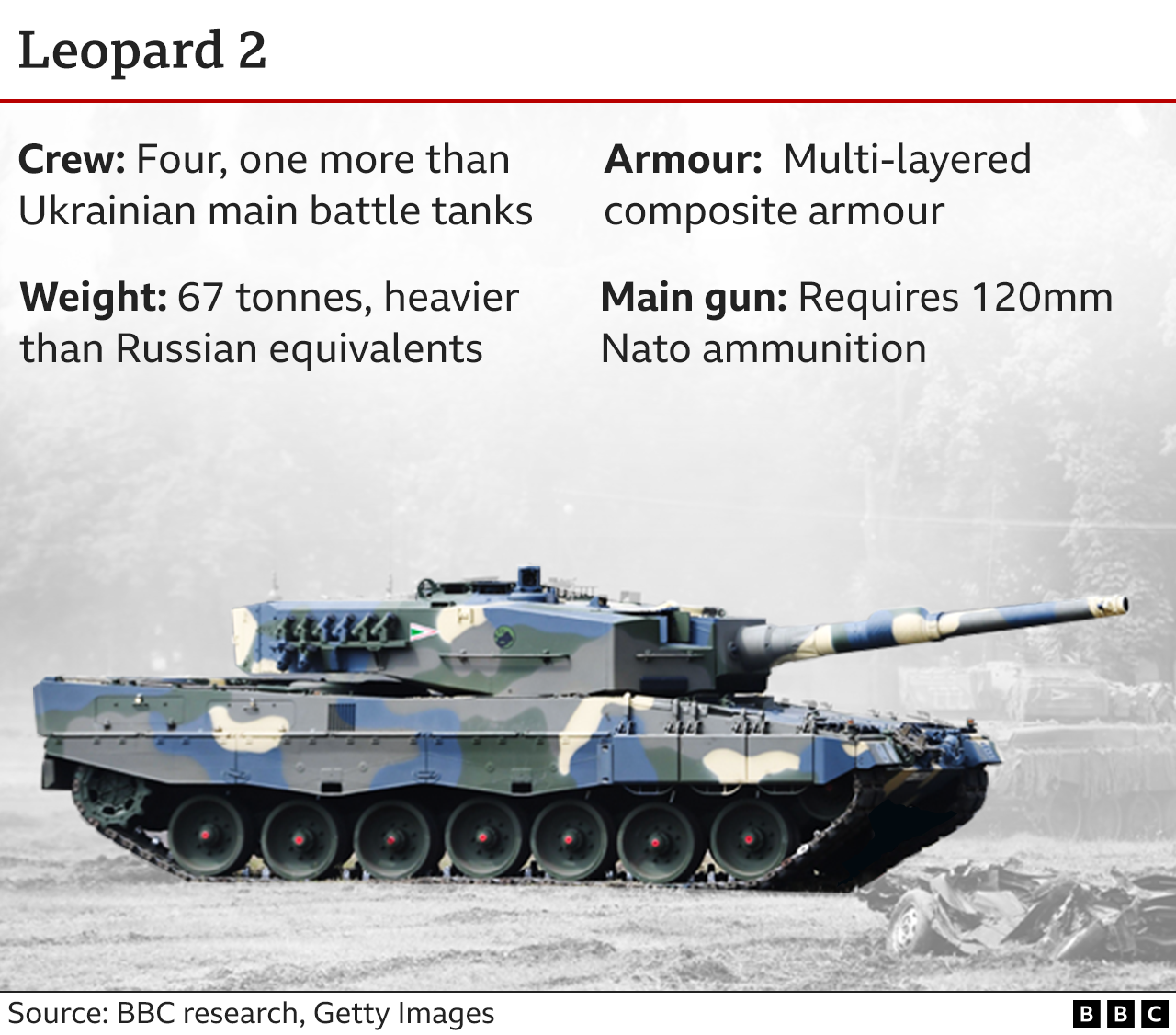
During the first months following the invasion, Nato preferred member countries to supply Ukraine with older tanks - ones that had been used in the former Warsaw Pact.
Ukraine's armed forces know how to operate them, and how to maintain them, and had a lot spare parts for them.
Modern Western tanks are more complicated to operate and harder to maintain.
Recent footage of a Ukrainian attack on Russian positions show that at least one Leopard tank and several Bradleys are already in use by Ukrainian forces.
The UK led the way in Nato by offering to provide the Challenger 2 - its main battle tank.

The Challenger 2 was built in the 1990s, but is significantly more advanced than other tanks available to Ukraine's armed forces.
Ukraine used Warsaw Pact designed T-72 tanks prior to the invasion, and since February 2022 has received more than 200 T-72s from Poland, the Czech Republic and a small number of other countries.

Announcing the US decision to send 31 Abrams tanks to Ukraine, President Joe Biden described them as "the most capable tanks in the world".
He said the US would start training Ukrainian soldiers to use them immediately but it remains unclear how long it will be until the tanks themselves are delivered.
Ukrainians are expected to finish Abrams tank training by end of summer which will line up roughly with the expected delivery, according to reports in the US media.
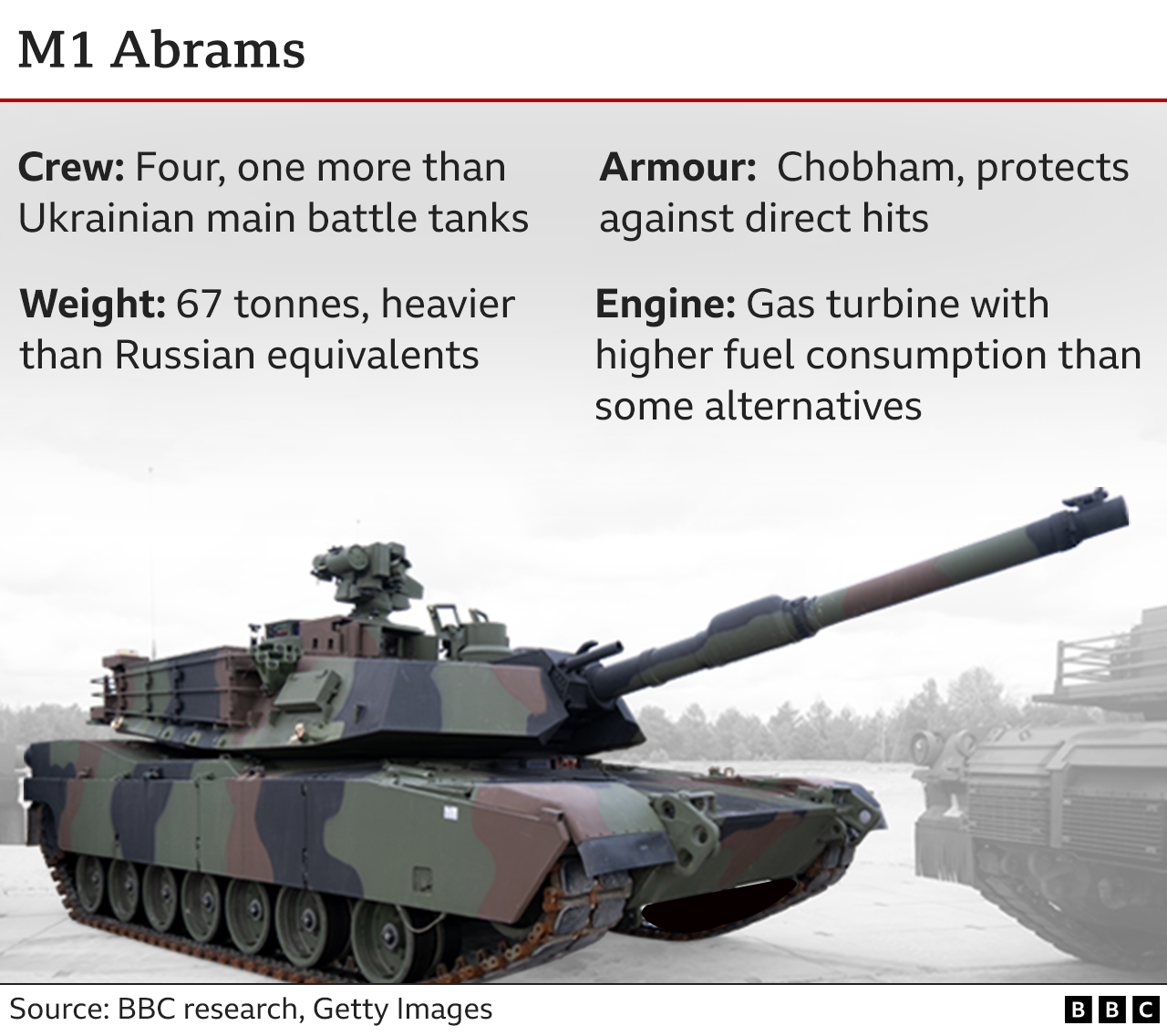
Combat vehicles
Military professionals point out that success on the battlefield requires a vast range of equipment, deployed in co-ordination, with the necessary logistical support in place.
The Stryker is one of the many armoured vehicles that have been donated to Ukraine. The US confirmed that 90 Strykers would be dispatched.
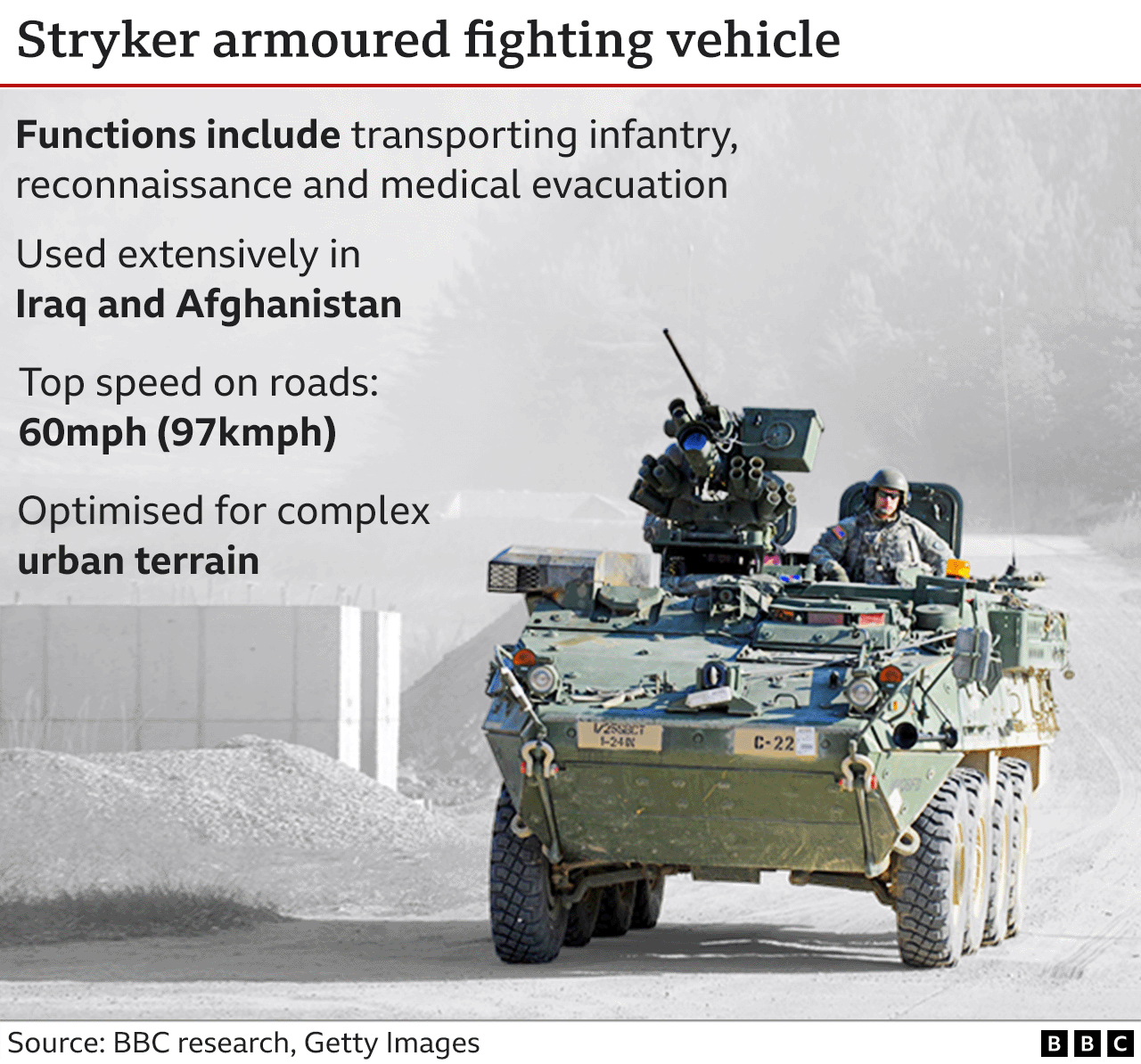
Among the other vehicles donated by the US were Bradley infantry fighting vehicles. They were used extensively by US forces in Iraq.
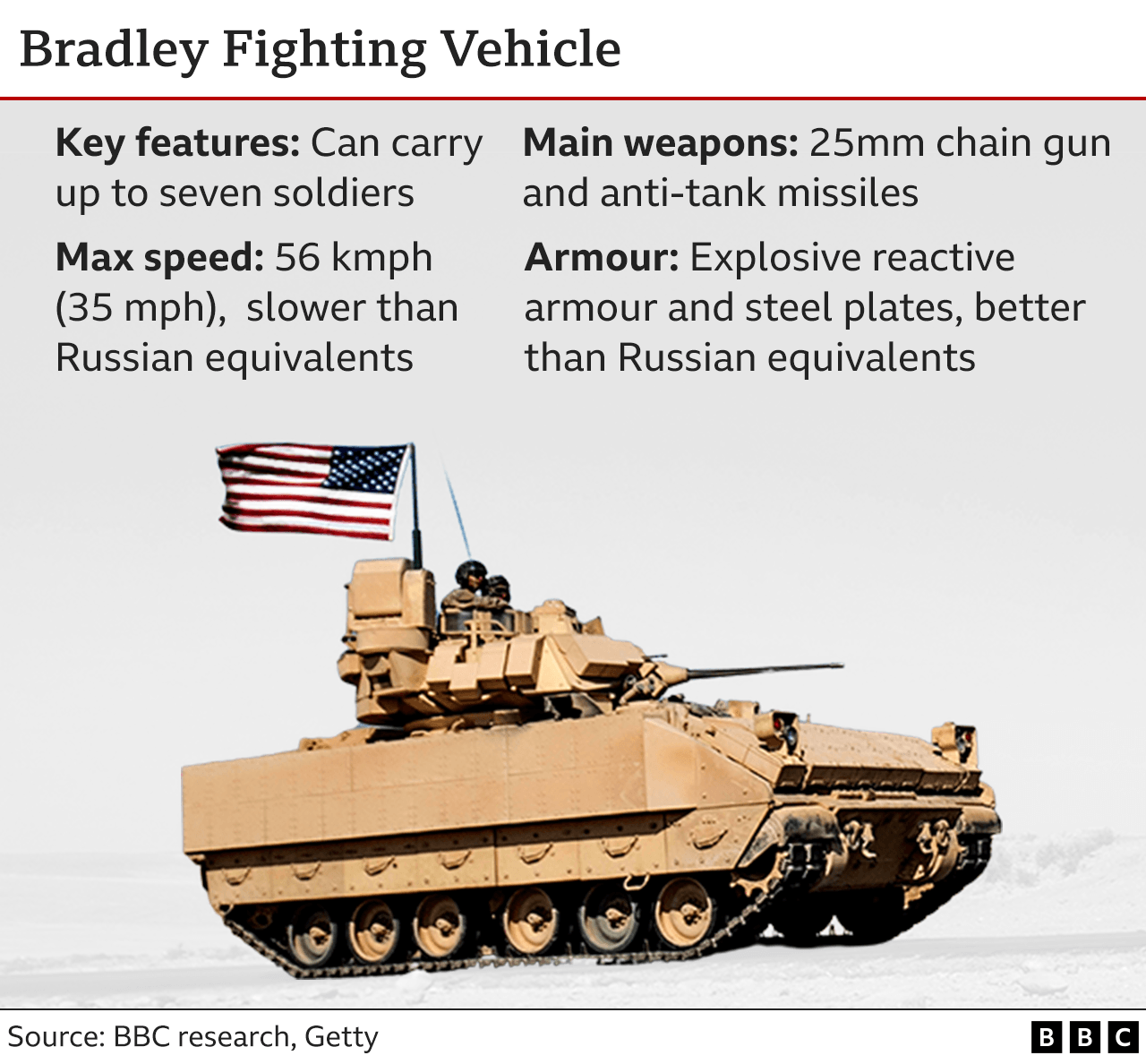
Air defences
In December, the US also announced it was sending the Patriot missile system to Ukraine - and Germany and the Netherlands have followed suit.
This highly sophisticated system has a range of up to 60 miles (100km), depending on the type of missile used, and requires specialised training for Ukrainian soldiers, likely to be carried out at a US Army base in Germany.
But the system is expensive to operate - one Patriot missile costs about $3m.
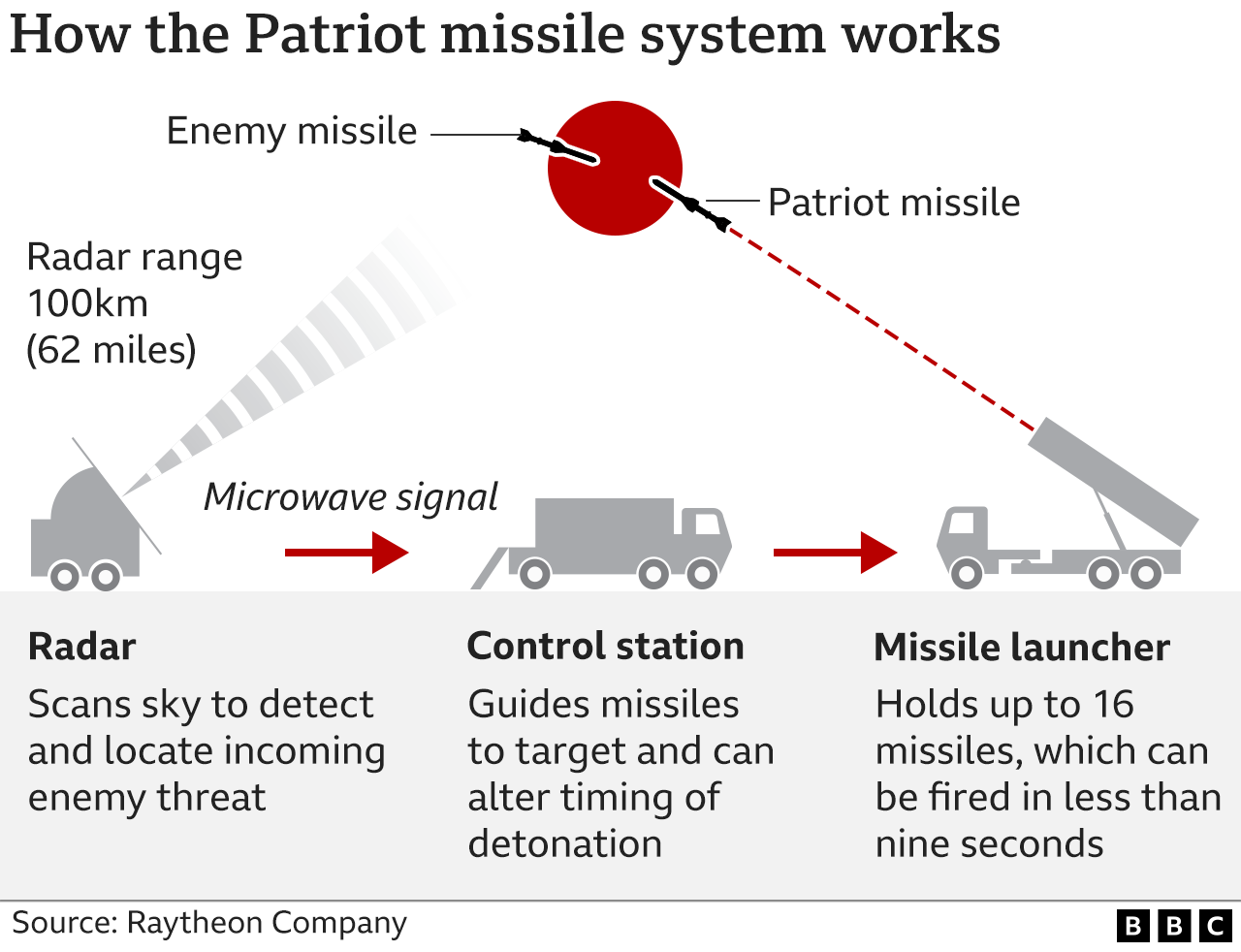
Since the start of the conflict, Ukraine has been using Soviet-era S-300 surface-to-air systems against Russian attacks.
Before the conflict began, Ukraine had about 250 S-300s and there have been efforts to replenish these with similar systems stockpiled in other former Soviet countries, with some coming from Slovakia.
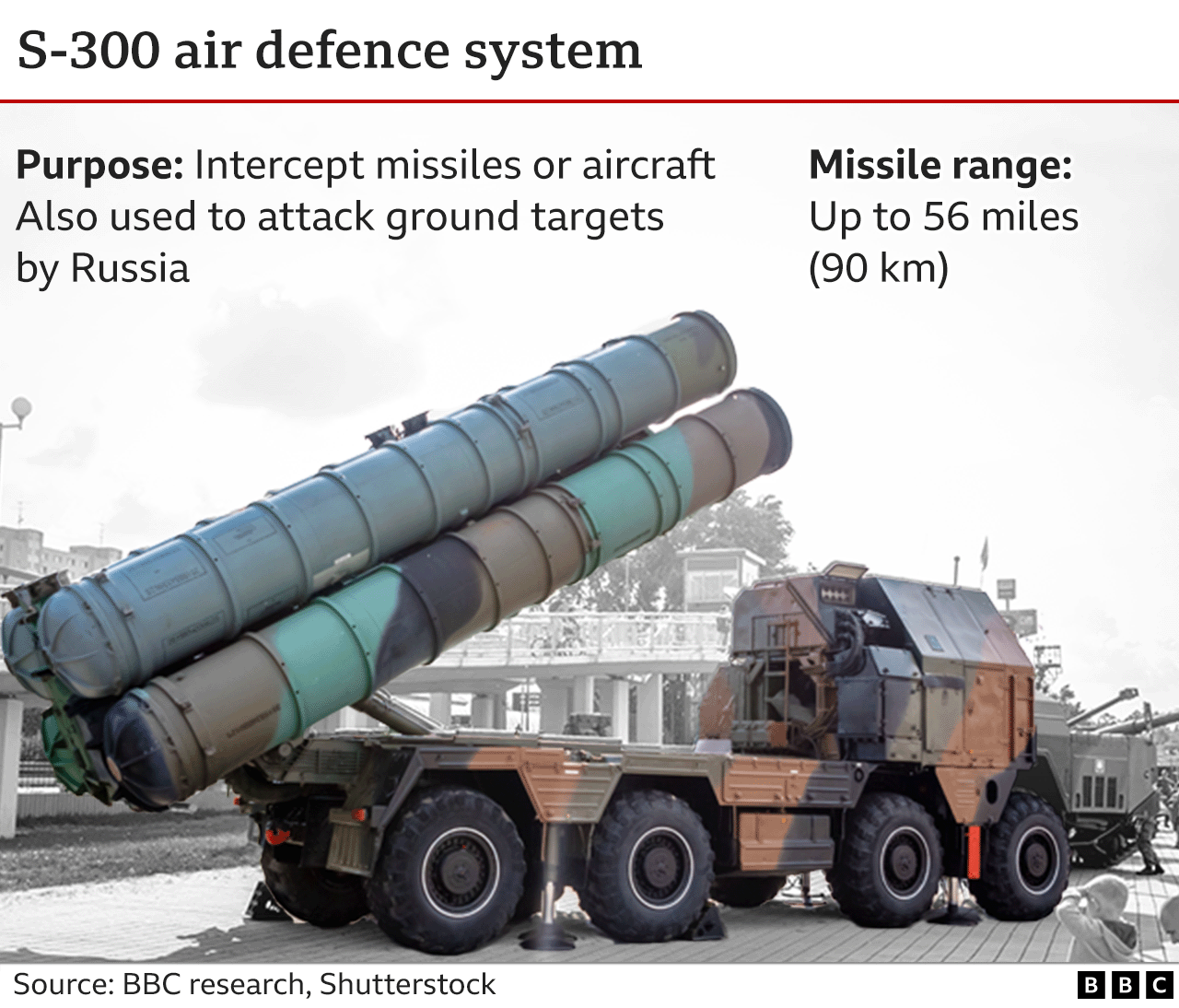
The US has also provided Nasams (National Advanced Surface-to-Air Missile System) to Ukraine. The first Nasams arrived in Ukraine in November.
In addition, the UK has provided several air defence systems, including Starstreak, designed to bring down low-flying aircraft at short range.
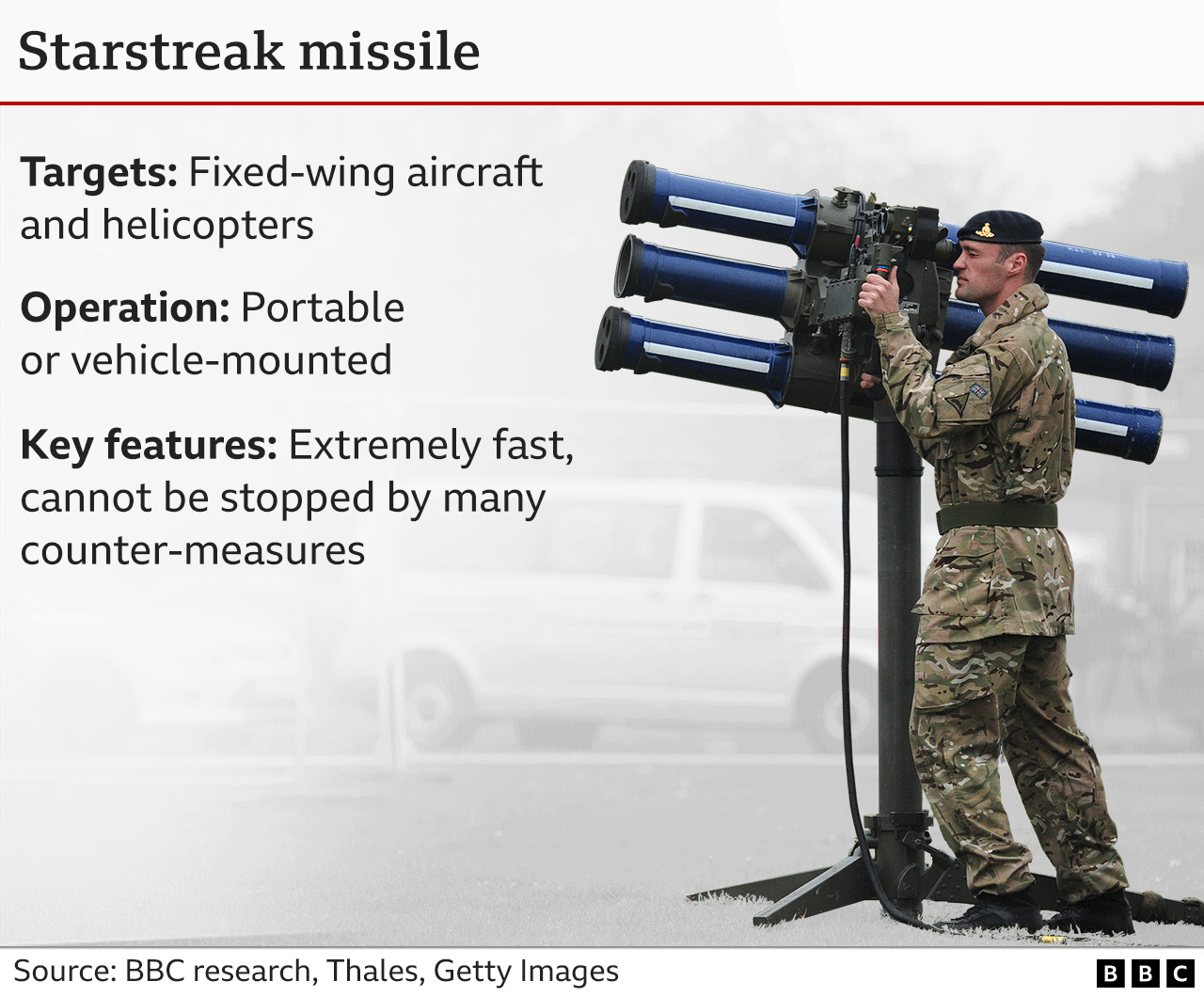
Germany has also provided air defence systems, including the IRIS-T air defence systems which can hit approaching missiles at an altitude of up to 20km.
Long-range artillery
Among the long-range rocket launchers sent to Ukraine by the US are the M142 High Mobility Artillery Rocket System or Himars. Several European countries have also sent similar systems.
Himars are believed to have been central to Ukraine's success in pushing Russian forces back in the south, particularly in Kherson in November.
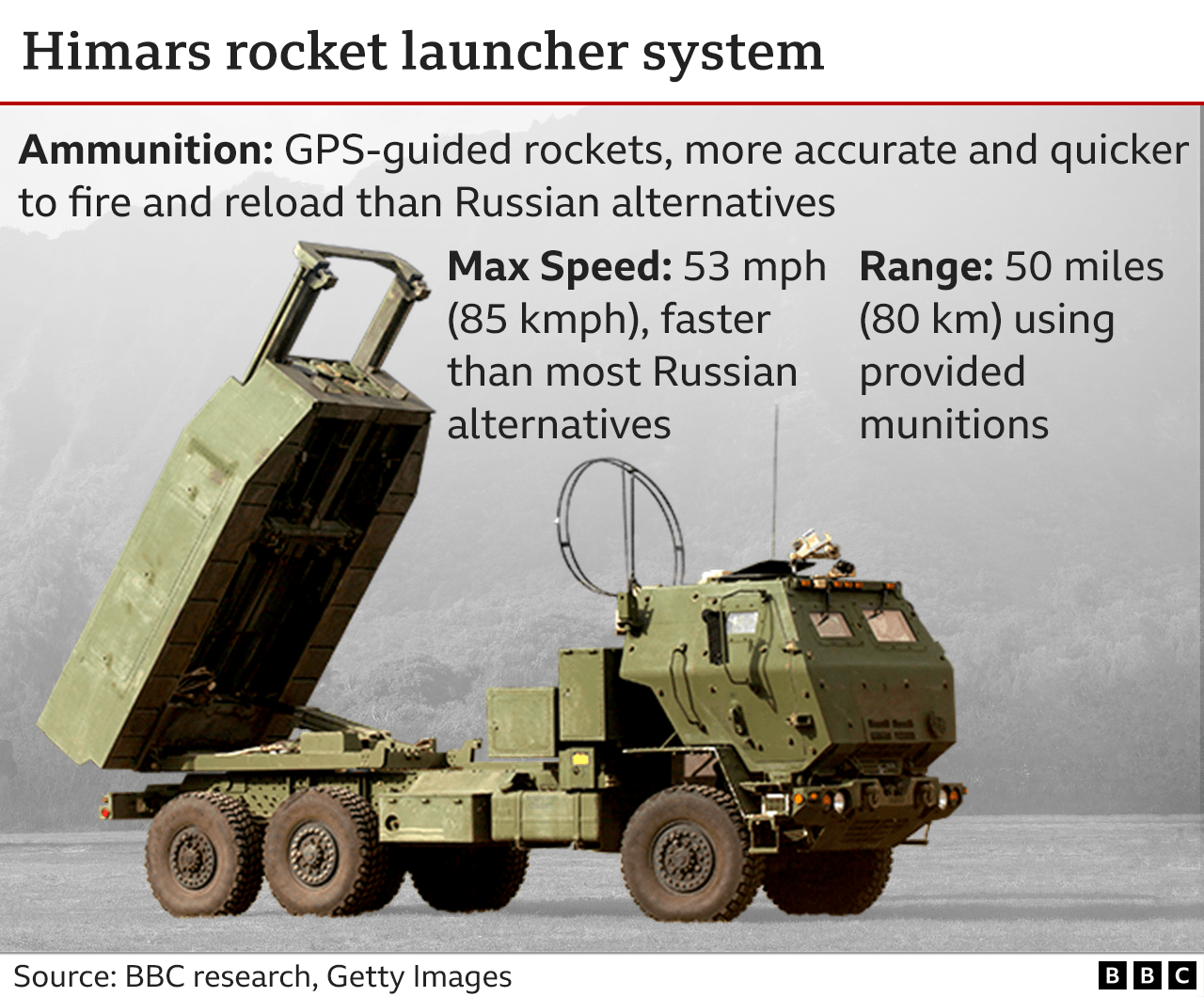
Himars systems are much more accurate have a longer potential range than the Smerch system used on the Russian side.
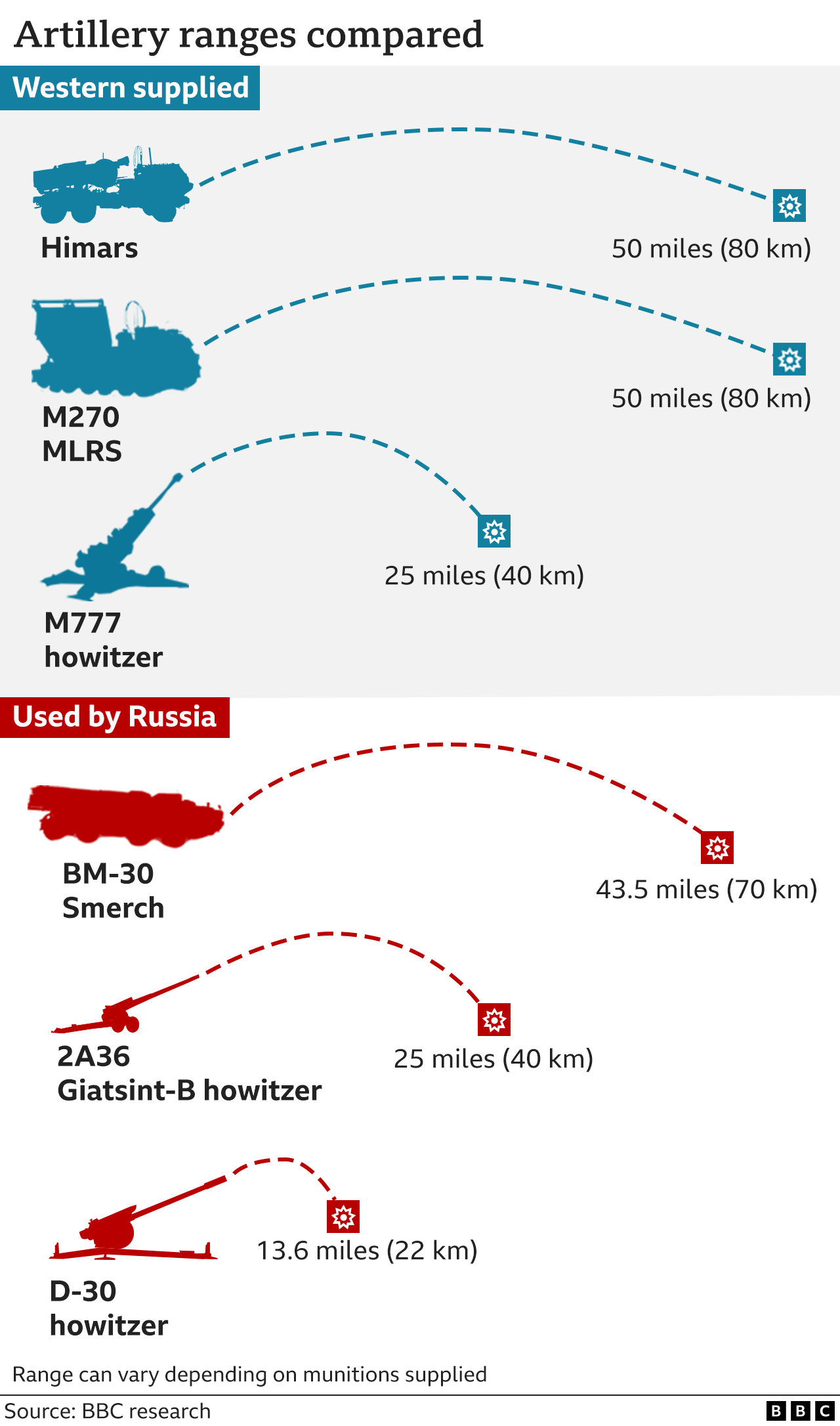
Howitzers
In the months following the invasion and Russia's retreat from Kyiv, much of the war centred on the east of the country where supplies of artillery to Ukraine were in heavy demand.
Australia, Canada and the US were among the countries to send advanced M777 howitzers and ammunition to Ukraine.
The range of the M777 is similar to Russia's Giatsint-B howitzer, and much longer than Russia's D-30 towed gun.
Nato countries say they are planning to ramp up their supply of shells, because Ukraine has been using them much at a faster rate than they are being delivered.
They are asking their domestic manufacturers to increase production.
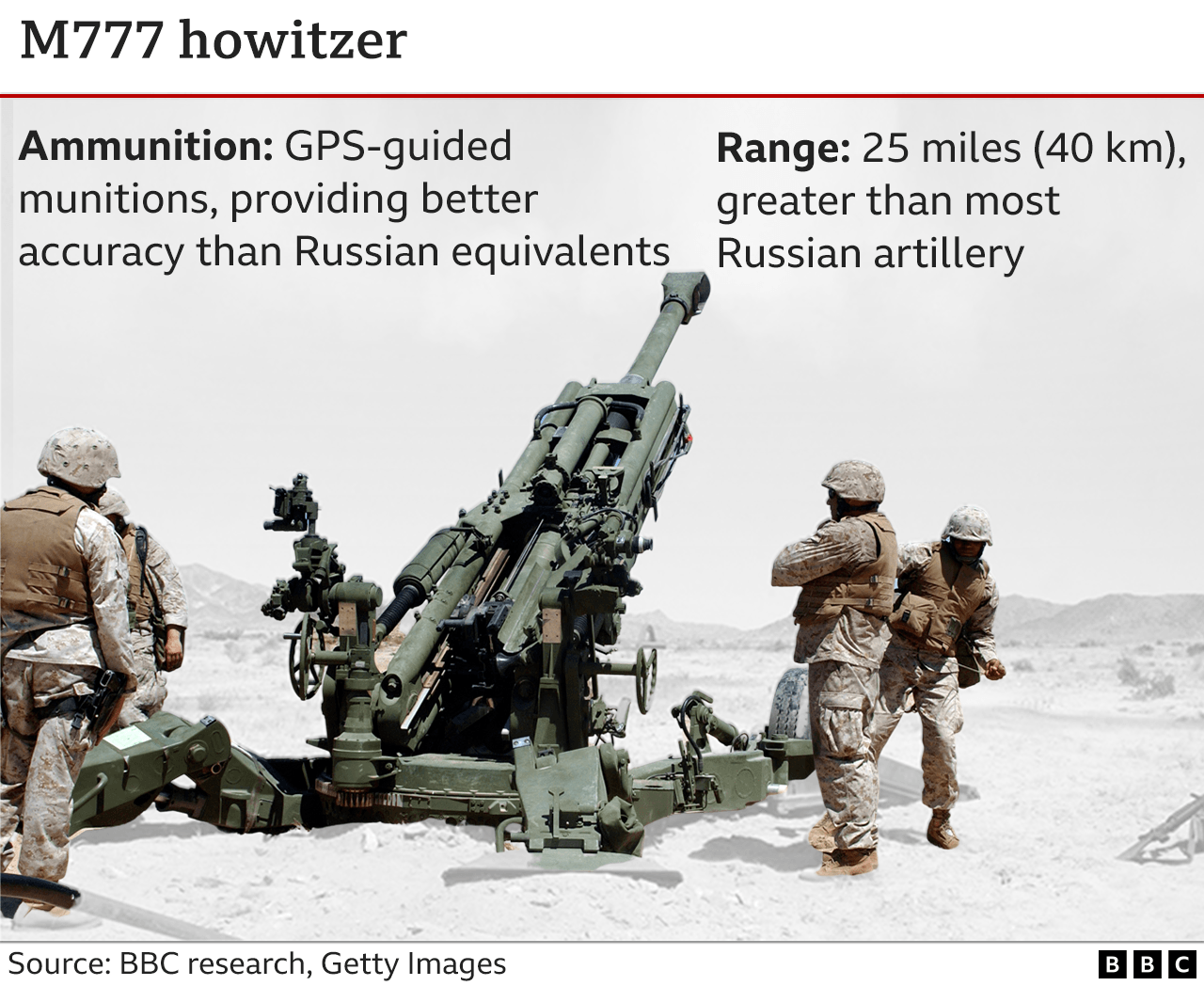
Anti-tank weapons
Thousands of Nlaw weapons, designed to destroy tanks with a single shot, have also been supplied to Ukraine.
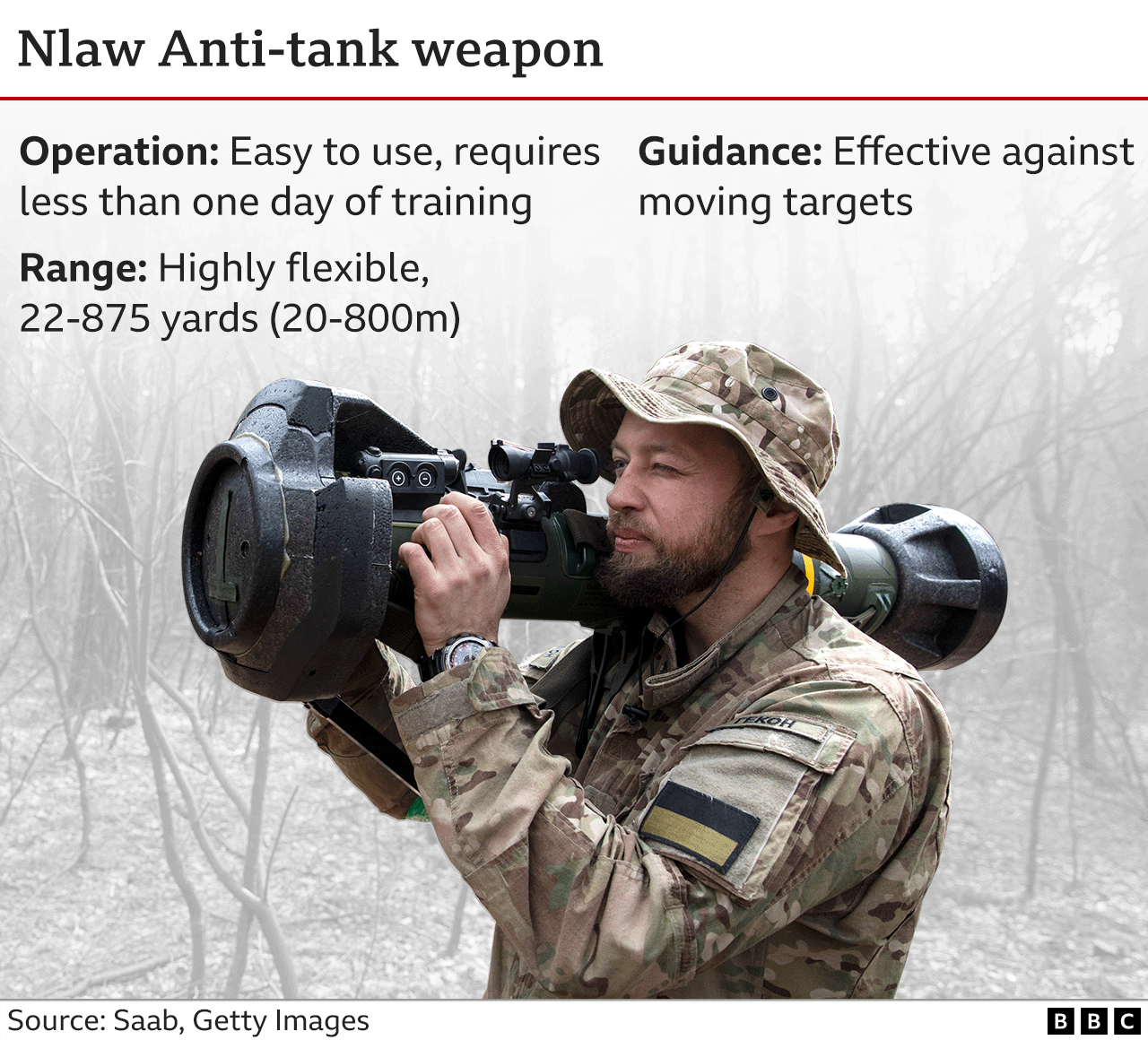
The weapons are thought to have been particularly important in stopping the advance of Russian forces on Kyiv in the hours and days following the invasion.
Drones
Drones have featured heavily in the conflict so far, with many used for surveillance, targeting and heavy lift operations.
Turkey has sold Bayraktar TB2 armed drones to Ukraine, while the Turkish manufacturer of the system has donated drones to crowd-funding operations in support of Ukraine.
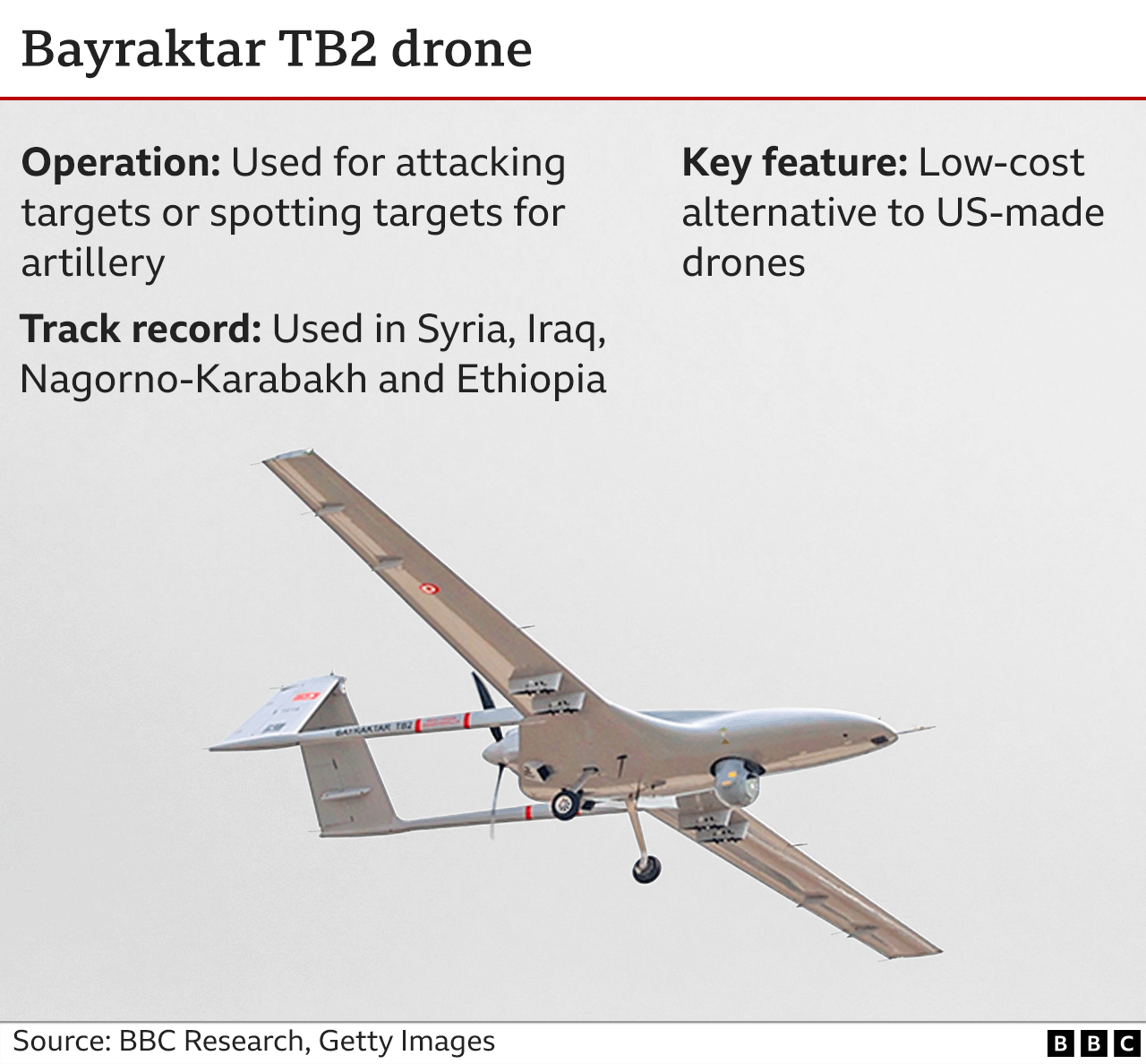
Analysts say the Bayraktar TB2s have been extremely effective, flying at about 25,000 feet (7,600m) before descending to attack Russian targets with laser-guided bombs.
What about fighter jets?
The US had repeatedly rebuffed Ukraine's pleas for fighter jets, instead focusing on providing military support in other areas.
But in May, President Joe Biden announced the US would support providing advanced fighter jets - including US-made F-16s - to Ukraine and also back training Ukrainian pilots to fly them.
The US endorsement will allow other nations to export their own F-16 jets, as the US legally has to approve the re-export of equipment purchased by allies.
The UK, Netherlands, Belgium, France and Denmark have welcomed the move and will provide support.
Additional reporting by Thomas Spencer. Graphics by Gerry Fletcher and Sana Dionysiou.
Related Topics
What's Your Reaction?













